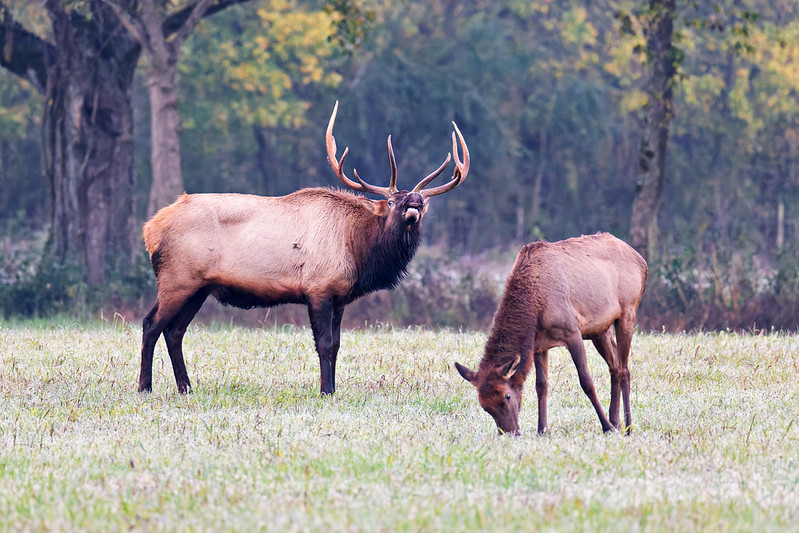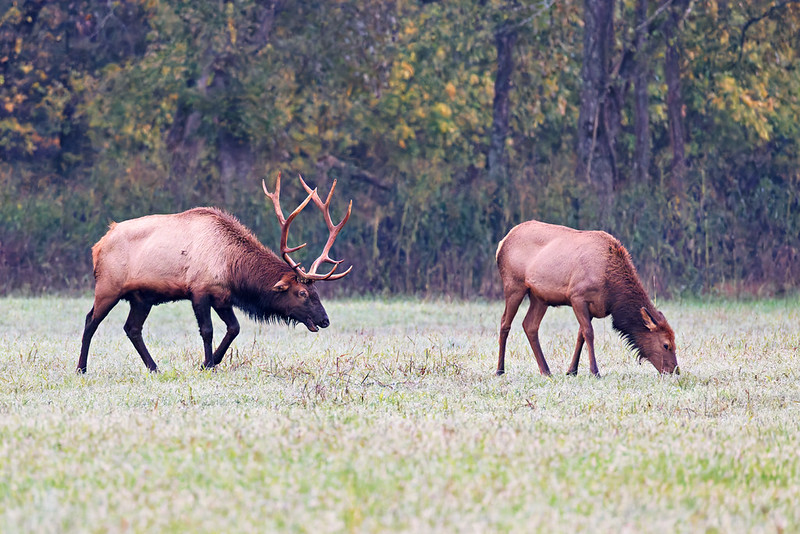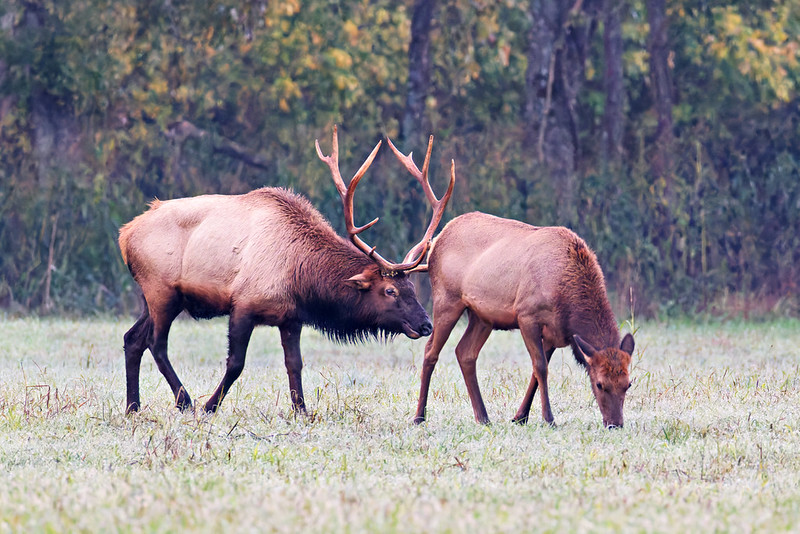Yesterday morning I watched a bull elk trail a cow elk across a foggy meadow in Boxley Valley, northern Arkansas. The air hung low and thick, and the dew-soaked grass shimmered under soft November light. The bull lifted his head, curled his upper lip, and drew in the scent of the air. The cow grazed quietly a few steps away. This was the Flehmen response, a signature elk behavior during the late rut.

Elk Behavior in Boxley Valley
By early November, the peak of the elk rut in Arkansas has usually passed. Most cows have been bred, and the bulls are less aggressive than they were in mid-October. But the season isn’t over. Bulls continue to test cows with the Flehmen response, a behavior in which they curl back their upper lip and draw air across a specialized organ in the roof of their mouth. This organ, called the vomeronasal organ, detects pheromones that signal whether a cow is still receptive to breeding.
I managed to capture a clear view of this behavior as the bull lifted his head and curled his upper lip in the cool morning air.

I’ve observed this Flehmen response many times in Boxley Valley over the years. The bull usually approaches a cow, samples her scent in the air, and then lifts his head in that familiar pose. It looks dramatic, but it’s a key part of late rut communication. Cows that weren’t bred during their first cycle, or younger females entering estrus for the first time, can still attract attention from persistent bulls.

The cow elk in these photos appeared calm and unbothered by the bull’s presence. She grazed steadily while he followed and occasionally tested the air. That dynamic is typical for this stage of the rut. Bulls aren’t as frenzied as they were weeks earlier, and cows are less skittish.
Boxley Valley sits within the Buffalo National River area, one of the best locations in Arkansas to observe elk. The reintroduced population has grown steadily since the 1980s, and the valley’s open fields and forested edges provide excellent habitat. November mornings here are often foggy, and that fog can create beautiful atmospheric conditions for photography.
Photographing Elk Behavior in Boxley Valley
I used a Canon EOS R5 paired with the Canon RF 200–800mm f/6.3–9 IS USM lens. The focal length was maxed out at 800mm for both shots. The aperture was f/9, the widest the lens allows at that zoom. Shutter speeds ranged from 1/250 to 1/350 second, fast enough to freeze movement without blur.

The ISO was high, between 8000 and 10000. That’s elevated, but the Canon R5 handles noise well at those levels, especially when there’s enough light to work with. The fog reduced contrast and softened the light, which helped minimize harsh shadows. I added +1/3 stop of exposure compensation to keep the elk’s lighter coat from underexposing.
I had my camera and lens mounted on a tripod and stood at the edge of the field as the elk moved toward me. The foggy backdrop worked in my favor. It separated the elk from the tree line and added depth to the composition. The muted tones of the grass and forest kept the focus on the elk. I framed each shot to show both animals, emphasizing the bull’s behavior while including the cow for context.
These kinds of conditions don’t last. The fog usually lifts by mid-morning, and the light gets harsher. I arrived before sunrise and stayed until the elk left the field. That gave me about two hours.
For another look at early-morning conditions in this area, see my post Elk Photography at Buffalo River: A Morning in Boxley Valley.
Reflections on Elk Watching in Arkansas
Boxley Valley is one of the most reliable places I’ve found for photographing elk in Arkansas. The animals are accustomed to vehicles, the terrain is open enough for clear shots, and the seasonal changes add variety to the images. Late-season elk behavior like this is quieter than the peak rut, but it’s no less interesting.
